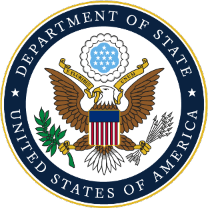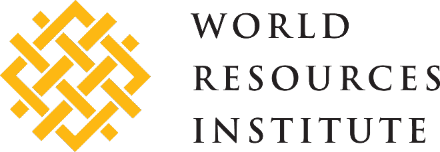Nature Crime: Illegal wildlife trade
Victor E. Miyakawa
Victor E. Miyakawa
Program Manager, US Forest Service / International Programs and Trade
Victor Miyakawa is a seasoned expert in information systems for natural resource governance, with over 20 years of experience across Latin America. He specializes in the design and implementation of large-scale information and control systems to support forest and wildlife management, particularly in the context of combating illegal logging and associated trade, as well as promoting data transparency.
He has led technical cooperation programs with national and regional governments in Peru, Colombia, and Ecuador, integrating advanced technologies such as remote sensing, timber identification tools, and forest inventories. His thematic expertise includes geoinformatics, bioinformatics, data sharing platforms, and capacity-building for government agencies, communities, and private sector stakeholders.
Fluent in Spanish and English, Victor also brings strong skills in monitoring and evaluation, multi-stakeholder facilitation, and regional coordination to support environmental governance and information integration efforts aligned with global transparency and conservation goals.
Patricia Raxter
Patricia is a Subject Matter Expert on transnational wildlife crime with a passion for conservation and a drive to identify real solutions to complex social-ecological problem sets. She provides detailed analysis to United for Wildlife Taskforce members in the finance and transport sector on wildlife trafficking networks, trends, and typologies with the aim of disrupting network activity.
Marcy Mendelson
Marcy Mendelson Wildlife Criminologist | Conservation Researcher | Documentary Filmmaker
Marcy Mendelson is an interdisciplinary expert in wildlife crime, environmental justice, and human-wildlife conflict, with over a decade of experience in investigative fieldwork, intelligence analysis, and global communications. A member of INTERPOL’s Wildlife Crime Working Group (Civil Society Division), she holds an MSc in International Criminal Justice (Wildlife Criminology) from the University of Portsmouth, where her thesis on gender and cheetah trafficking was awarded with distinction.
Her analytical and investigative work has supported organizations including the Environmental Investigation Agency and Freeland. She has produced intelligence reports on illegal wildlife trade and conducted field journalism across Eastern and Southern Africa, with bylines in National Geographic, AFAR, and Africa Geographic. She is the award-winning director of The Last Cheetahs of Solitaire, a conservation documentary currently screening internationally and on the WaterBear Network.
Mendelson regularly speaks on the silencing of conservation actors in politically volatile contexts, most recently presenting on Ecopoliticide—the strategic targeting of conservationists—as part of CECRN’s Global Environmental Justice Conference (2025). Her work integrates criminological research, visual storytelling, and advocacy for coexistence, with a sustained focus on gender, displacement, and transnational enforcement dynamics in nature crime.
Website: Cheetah-Watch.com
Portfolio: MendelsonImages.com
Talk: Ecopoliticide – CECRN Global Environmental Justice Conference
Location: Based in Berlin, Germany & Global / U.S. & Africa-based operations
Languages: English (native/ fluent), German B1
Security Clearance: Eligible upon request
Matthew LEWIN
Director, Inquisitio Limited
Albert DIANDY
Safety and Security Manager, Wildlife Conservation Society
Christian PLOWMAN
Counter-Trafficking Advisor, Wildlife Conservation Society
Jessica Graham
Jessica Graham serves as the President of JG Global Advisory, LLC a minority, women-owned small business in the Washington, DC area that provides integrated solutions responding to the challenges of environmental security. Through strategic policy and planning, business development, and project management, Jessica has supported hundreds of conservation NGOs around the globe to secure tens of millions of dollars in funding to protect biodiversity. She previously worked with INTERPOL’s Illicit Trade Sub-Directorate and also served as a Senior Advisor at the U.S. Department of State where she created the wildlife crime program for the Bureau of International Narcotics and Law Enforcement Affairs (INL) and served as a negotiator working on crime, biodiversity and climate change issues in the United Nations. With over 15 years of dedicated experience working on international issues, she regularly lectures and implements global projects for both the non-profit and private sectors. Her leadership has been instrumental in developing environmental crime programs and facilitating partnerships aimed at counter wildlife trafficking projects. Her work has impacted long-standing policy and capacity-building efforts across continents, from Africa to Latin America and Asia, reflecting her deep commitment to enhancing global security and conservation.
She serves on the Board of several international and locally based organizations in Washington, DC that are dedicated to the environment and empowering youth and founded a non-profit organization aimed at protecting vulnerable communities from global insecurity. Jessica received her Master’s degree from the University of California, San Diego where she studied International Politics, Environmental Policy, and Chinese Studies and holds a Bachelor’s degree from the University of Florida.
Jessica has conducted research and published several pieces on wildlife crime, including co-authoring a chapter in Women and Wildlife Trafficking: Participants, Perpetrators, and Victims, reviewing the zero instances of corruption in all-female anti-poaching units across Africa in an academic textbook in March 2022.
Kelsey Prediger
Executive Director, Pangolin Conservation & Research Foundation
Nicci Wright
Wildlife Rehabilitation Specialist, The African Pangolin Working Group
Claire Okell
CEO, The Pangolin Project


